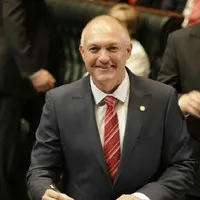
Shadow Parliamentary Secretary for the Central Coast and State MP for Wyong, Mr David Harris, quoted from The Point in a private member’s statement in the NSW Parliament last week. Here’s what he said:
From official NSW Parliament Hansard…Mr DAVID HARRIS (Wyong) (16:49): The financial situation of Central Coast Council is a very important issue in our community. I acknowledge award-winning journalist Jackie Pearson, who provided a precis of the LG Solutions report, which I will refer to. LG Solutions provides financial software to New South Wales councils and publishes a best practice newsletter. It published an analysis about the financial situation of Central Coast Council in the November 2020 edition of its newsletterDebits and Credits, which has most of the 120-plus New South Wales local governments as subscribers.
LG Solutions’ analysis appears to back up the conclusions drawn by DMB Consulting in September and Grant Thornton before that. According to all three of those consultancy firms, Central Coast Council staff, the NSW Office of Local Government and the Audit Office of NSW have serious questions to answer regarding financial accountability. LG Solutions looked at the audited financial statements of the Central Coast Council to determine if there were signals that indicated the council was heading into financial trouble. In everyday language, a council must break down its cash expenditure into different buckets—externally restricted funds, internally restricted funds and unrestricted cash. The latter is what the council may spend for liquidity purposes on everyday expenses. It cannot spend internally restricted funds without a council resolution, which in this case never occurred. It can only spend externally restricted funds with the permission of the Minister, and the Minister never gave that permission. At no time prior to the September 2020 crisis did Central Coast Council staff inform councillors that they were spending restricted funds.
In its audited reports, Central Coast Council understated its externally restricted funds by $129 million. That means it either overstated the amount it had in internally restricted funds or in unrestricted day-to-day cash. Council must produce a separate, audited financial report for its externally restricted water and sewer fund. The total cash available in the water and sewer fund special purpose financial statements was less than the total in the same fund when it was reported in council’s overall financial statement. The overall consolidated figure in the council’s audited accounts was correct but it was broken down incorrectly. At first glance, Central Coast Council’s books look pretty good—a healthy cash position, everything going well. It is only when the figures are validated that there is a realisation something is wrong. It is difficult to believe the mistake happened. Local government auditors would surely check that the total of restricted water and sewer funds was the same across the two sets of accounts.
According to LG Solutions, this problem did not suddenly occur in 2020. They looked at three years of post-amalgamation audited reports and the problem was across all three years, getting bigger every year. LG Solutions checked other councils’ reports to convince themselves the anomaly was not widespread. It was not. The LG report goes on to say:
On the face of it … Central Coast’s audited financial statements for YE 18/19 suggests nothing untoward: a net operating surplus result for the year of 62,397K (a stable result when compared to the previous year’s $66,214,000 figure); a net operating deficit result before capital income of -$5,126,000 (which while a disappointing result was a 75% improvement on the previous years). In terms of rankings … there were 21 Councils who reported worse deficits before capital … Capex cash outflows of $169 million (at an average of $170m pa over the 4 years since merger compared to an $144m pa pre merger); no new debt since the start of the merger; and the repayment of $100 million in loan liabilities over the same period. The Council had $478 million dollars in cash and investments at June 30, 2018 (with an average annual balance of $418 million over the 4 years of merger).
The council’s performance ratios were close to or exceeding the industry benchmarks. The question that needs to be answered next is: How and why did this disaster happen? We, as a community, are asking the Minister, who is here in the Chamber this evening—and I acknowledge her support with the council; I have spoken to her about my concerns with the council—for an independent inquiry to find out why this happened. It started pre-merger and continued post-merger. All of these government organisations looked at their accounts and they all missed what was going on. Ratepayers should not have to pay the penalty for these mistakes.


